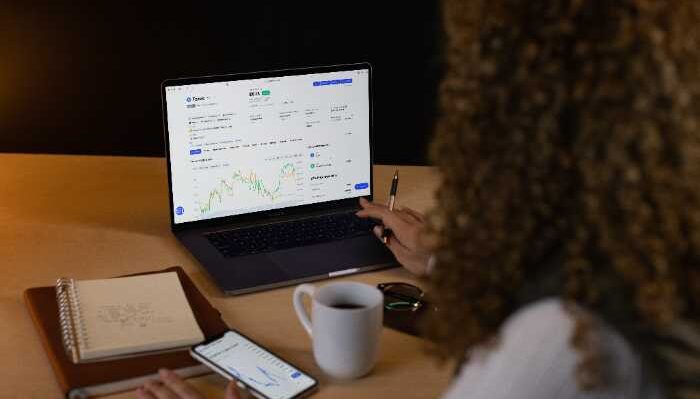
When it comes to trading, you may have heard of “shorting” and “puts.” But what are they? And what is the difference between them?
Investors have many ways to profit from the stock market. The most common way is by buying and selling stocks, but there are other options. Investors can short stocks, for example, or purchase puts. So, is there any difference between shorting vs. puts? Shorting and purchasing puts are different things that produce very different results. Let’s explore this topic in more detail!
Shorting vs. Puts: Meaning
Before we can push any further, it is ideal for you to understand the meaning of these terminologies to differentiate them correctly.
What Is Shorting?
Shorting is taking a position in which an investor sells security first with the hope of repurchasing it at a lower price so they can have a profit. For example, if an investor shorted 100 shares of Company XYZ at $10 per share, and the stock falls to $8 per share, the short-seller buys back the shares to close out the position. The short seller’s profit would be $200 ((100 shares x $2) – commissions). Shorting is also referred to as “selling short” or “going short.”
What Is a Put Option?
Puts are options contracts that give the holder (or buyer) of the put option the right to sell 100 shares of an underlying stock (or other assets) at an underlying asset price ( strike price ) before a specific date ( expiration date ). For example, let’s say you buy one put option premium contract on ABC stock for $1 per share with a strike price paid a total of $50 and an expiration date of December 20. This gives you the right to sell 100 shares of ABC stock for $50 anytime between now and December 20.
If the price of ABC stock is below $50 per share on the expiration date, the put option expires worthless, and you lose the $100 that you paid for the option. However, if the price of ABC stock is above $50 per share on the expiration date, you can exercise your put option and sell your 100 shares of ABC stock for $50 per share, regardless of the actual market price.
What Factors Affect a Put’s Price?
Puts are affected by various factors, but stock price and time are the main ones.
Stock Price
The lower the stock price is, the more valuable the put option becomes. A put option gives you the right to sell shares at a specific strike price, so if the stock falls below that strike price, the put increases in value.
Time Value
The closer you get to expiration, the less time there is for the underlying stock to fall below the strike price so that the puts will lose value as expiration approaches.
The Underlying Security’s Price
Short sellers hope to profit from a decline in the underlying security price. To do this, they borrow shares of the stock they wish to sell from somebody else, sell the stock, and hope to repurchase it at a lower price to return the shares to the person they borrowed them from and keep the difference as their profit.
Changes In Volatility
Implied volatility measures how much the market thinks a stock will move, and it has a significant effect on options prices. All else being equal, higher implied volatility means higher option prices. Therefore, short sellers will profit if implied volatility decreases.
Dividends
If the underlying stock pays a dividend, short-sellers will have to pay that dividend to the person they borrowed the shares from. This reduces their potential profits since it affects the option strike price.
The Difference Between Shorting And Put

Here are some common notable differences between shorting and putting.
Costs
When shorting a stock, you will have to pay any dividends that the stock may declare and any fees associated with borrowing the shares.
Purchasing a put option does have some cost since you are paying a premium for the right to sell the stock at a specific price. However, you will not have to pay any dividends since you do not own the underlying shares.
Risk
When shorting a stock, your risk is theoretically unlimited since the stock’s price could go up infinitely, and you would still owe money to whoever you borrowed the shares from.
You can lose the most if the stock price is above the strike price at expiration and you do not exercise the option.
Reward
Short sellers are looking for a stock price to fall to repurchase it at a lower price and make a profit. Therefore, their potential reward is also theoretically unlimited.
With a put option, you have a limited maximum reward to the premium that you paid for the option plus any commissions. You will only make money if the stock price falls below the strike price before the expiration.
Is Buying a Put Similar to Short Selling?
A simple answer is No! Short selling and buying a put are not the same. When you short sell, you hope the stock price falls so you can repurchase it at a lower price and pocket the difference. When you buy a put, you want the stock price to fall so you can exercise your option and sell shares at the strike price, which is usually above the current market price.
The main similarity between shorting and buying a put is that both short selling and put allow investors to profit from a decline in stock prices. But there are some key differences as well.

Conclusion
Short selling does have some similarities to buying puts, but there are also some key differences. When you short sell, you’re borrowing shares from somebody else and selling them, hoping to repurchase them at a lower price so you can return the stakes and keep the difference as your profit. On the other hand, you’re paying for the option when you buy a put.
In contrast, your downside risk is limited to the premium you paid for the option plus any commissions or fees when you buy a put. And if the stock price does decline below the strike price, you have the opportunity to sell shares at that price, which is usually above the current market price.



